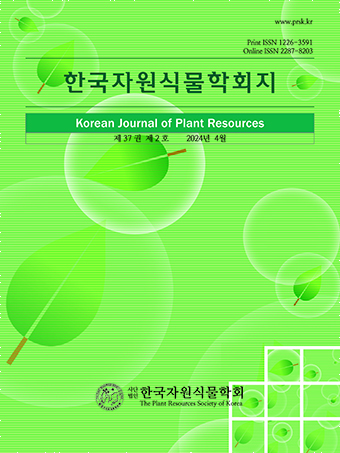Abstract
References
Information
Farahmandfar, R., B. Tirgarian, B. Dehghan and A. Nemati. 2020. Comparison of different drying methods on bitter orange (Citrus aurantium L.) peel waste: changes in physical (density and color) and essential oil (yield, composition, antioxidant and antibacterial) properties of powders. J. Food Meas. Charact. 14(2):862-875.
10.1007/s11694-019-00334-x
- Publisher :The Plant Resources Society of Korea
- Publisher(Ko) :한국자원식물학회
- Journal Title :Korean Journal of Plant Resources
- Journal Title(Ko) :한국자원식물학회지
- Volume : 35
- No :4
- Pages :455-463
- Received Date : 2022-03-14
- Revised Date : 2022-04-13
- Accepted Date : 2022-04-13
- DOI :https://doi.org/10.7732/kjpr.2022.35.4.455




 Korean Journal of Plant Resources
Korean Journal of Plant Resources







